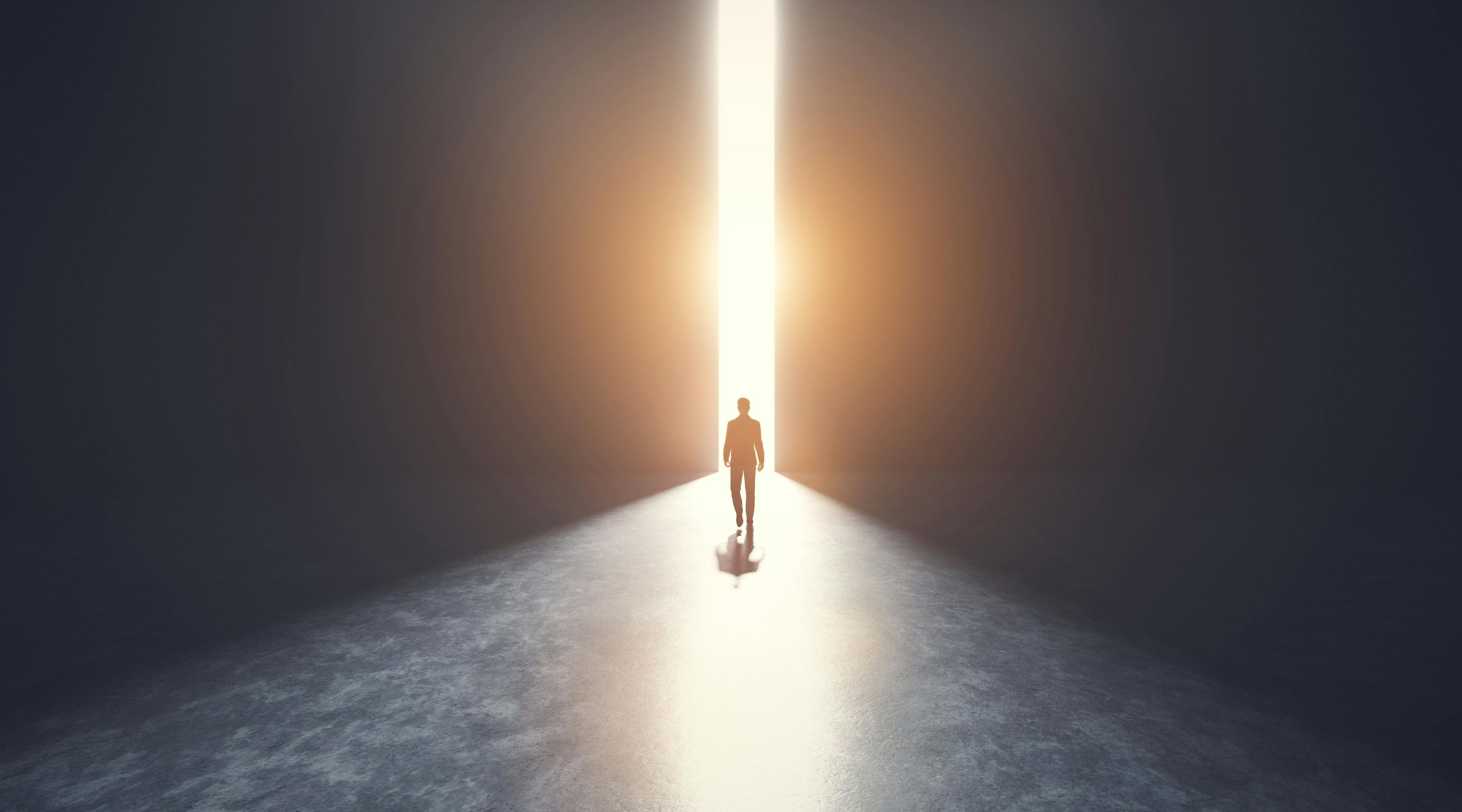The Future of Method Development for Two-Dimensional Liquid Chromatography – Work Smarter, Not Just Harder?
The potential for wider use of two-dimensional liquid chromatography (2D-LC) is becoming more evident as the complexity of samples that must be handled continues to increase in application areas ranging from biopharmaceuticals to biosourced consumer products. Although the sophistication and ease of use have improved in recent years for commercial 2D-LC instruments, many analysts are still intimidated by the method development process for 2D methods because of the larger number of variables involved compared to conventional liquid chromatography. In this article, I share my perspective on the trends in this area, and the developments we are likely to see in the field in the near future.
In 2022, on this 40th anniversary of LCGC, I often find myself thinking about how to approach method development for two-dimensional liquid chromatography (2D-LC). Although 2D-LC is a powerful chromatographic technique, and today those just starting to use it have very good options in terms of purchasing commercial instrumentation and software, method development is a process that is still strongly influenced by the experience of the analyst. Although I am fortunate to have a lot of experience to draw upon when developing new methods, new users are not so fortunate and often feel overwhelmed and intimidated by the method development process, which is understandable. If there is a number of variables that can be adjusted in method development for conventional LC (for example, column chemistry and dimensions, flow rate, and temperature, to name a few), then there are at least twice as many variables to deal with for 2D-LC methods. Perhaps even more importantly, many of the variables in the two dimensions are interdependent (1). I personally view this as the single greatest impediment to more widespread use of 2D-LC in the coming years. Reflecting on the technical program for the High Performance Liquid Chromatography (HPLC) 2022 Conference recently held in San Diego, California, it seems to me that there are many parallels that can be drawn between the way that method development strategies developed for one-dimensional LC (1D-LC) over the past 40 years, and the way those strategies are currently developing for 2D-LC. Perhaps we can learn from the developments in 1D-LC to accelerate the progression of strategies for 2D-LC method development—I think there are good opportunities to work smarter instead of harder. Thinking about the talks and posters at HPLC 2022 and the current work being done in my group, I see at least three themes emerging.
First, we desperately need software tools that can assist us with the method development process. In San Diego, John Dolan gave a talk entitled, “In the Fullness of Time—The DryLab Story.” This talk, in 2022, occurred 33 years after the first papers were published describing what would eventually become known as DryLab (2,3). In one of these papers (2), Snyder and others stated: “This procedure, which can be referred to as ‘computer simulation,’ attempts to mimic the strategy followed by experienced chromatographers, but uses the computer to reduce the required time and effort.”
Snyder and others were absolutely correct. Reducing the required time and effort required for the method development process is needed for 2D-LC. There has been some research in this direction in recent years by Pirok’s and Regalado’s groups (4–8). For our part, Thomas Lauer gave a presentation at the HPLC 2022 meeting describing a recent effort in my group to develop a freely available simulation tool for 2D-LC, but more is needed.
Second, it appears that our community is embarking on a new era where advanced simulation tools, informed in part by larger data sets than we’ve had in the past (that is, machine learning, artificial intelligence, and big data) will play important roles in chromatographic simulations of the future. The program for HPLC 2022 had multiple sessions dedicated to machine learning and artificial intelligence, which I believe is the first time these topics have appeared with such prominence at this annual meeting. It will be fascinating to see what value these advanced simulation tools add to existing optimization strategies, and if these approaches can be applied to 2D-LC as well.
Finally, there are still some significant holes in the foundational knowledge we need to successfully implement method development software for 2D-LC, and any method development software schemes we come up with are not going to be as effective as they could be until we fill those knowledge gaps. One example of this that we have focused on pretty intensively for the past several years is how the volume and composition of the effluent from a first dimension (1D) separation affect the behavior of the second dimension (2D) separation in 2D-LC. In 1D-LC, it is generally advised to not use injection volumes much larger than approximately 1% of the column dead volume because injecting larger volumes can adversely affect peak shape and resolution. However, in 2D-LC, limiting the volume of the 1D effluent into the 2D column in this way is not an option in most cases because the detection sensitivity would be too poor and render the 2D-LC method useless. As a concrete example, it is common in our work to inject 80 μL of the 1D effluent into a 50 mm x 2.1 mm i.d. 2D column that has a dead volume of approximately 100 μL. In other words, the injected sample literally fills the column and effectively acts as the mobile phase for a short time. We (9–11) and others (12) have studied this problem and now better understand the conditions that can lead to serious degradation of the performance of the 2D separation (for example, analyte breakthrough and other types of peak distortion and broadening). However, most of this work so far has focused on relatively simple systems (for example, injecting acetonitrile or a buffer into acetonitrile or a buffer where pH does not play a major role). Many important applications of 2D-LC involve conditions where differences between the mobile phases and column chemistries are maximized in the interest of maximizing the complementarity of the two separations. Under these conditions, differences in mobile-phase pH and additive concentrations can have significant effects on the 2D separation (13), and can appear as “unpredictable” behavior to those new to 2D-LC method development. In the long run, we will need to be able to account for these behaviors so that method development is more about following a process informed by data than it is about guessing which conditions might be worth trying. We need to build up the knowledge and tools that enable us to work smarter instead of harder.
I’m excited to see how the themes we observed at the HPLC 2022 meeting impact the field of 2D-LC in the near future, and I am optimistic that by the 45th anniversary of LCGC, method development for 2D-LC will feel much more systematic than it does today and approachable by a wide range of users.
References
(1) M. Sarrut, A. D’Attoma, and S. Heinisch, J. Chromatogr. A. 1421, 48–59 (2015). https://doi.org/10.1016/j.chroma.2015.08.052.
(2) L.R. Snyder, J.W. Dolan, and D.C. Lommen, J. Chromatogr. A. 485, 65–89 (1989). https://doi.org/10.1016/S0021-9673(01)89133-0.
(3) J.W. Dolan, D. Lommen, and L.R. Snyder, J. Chromatogr. A. 485, 91–112 (1989).
(4) D.M. Makey, V. Shchurik, H. Wang, H.R. Lhotka, D.R. Stoll, A. Vazhentsev, et al, Anal. Chem. 93, 964–972 (2021). https://doi.org/10.1021/acs.analchem.0c03680.
(5) I.A.H. Ahmad, D.M. Makey, H. Wang, V. Shchurik, A.N. Singh, D.R. Stoll, et al, Anal. Chem. 93(33), 11532–11539 (2021). https://doi.org/10.1021/acs.analchem.1c01970.
(6) D.R. Stoll and B.W.J. Pirok, LCGC North Am. 40, 30–34 (2022).
(7) B.W.J. Pirok, S. Pous-Torres, C. Ortiz-Bolsico, G. Vivó-Truyols, and P.J. Schoenmakers, J. Chromatogr. A. 1450, 29–37 (2016). https://doi.org/10.1016/j.chroma.2016.04.061.
(8) S.R.A. Molenaar, P.J. Schoenmakers, B.W.J. Pirok, More-Peaks, Zenodo, 2021. https://doi.org/10.5281/ZENODO.5710442.
(9) D.R. Stoll, R.W. Sajulga, B.N. Voigt, E.J. Larson, L.N. Jeong, and S.C. Rutan, J. Chromatogr. A. 1523, 162–172 (2017). https://doi.org/10.1016/j.chroma.2017.07.041.
(10) D.R. Stoll, K. Shoykhet, P. Petersson, and S. Buckenmaier, Anal. Chem. 89, 9260–9267 (2017). https://doi.org/10.1021/acs.analchem.7b02046.
(11) D.R. Stoll, D.C. Harmes, G.O. Staples, O.G. Potter, C.T. Dammann, D. Guillarme, and A. Beck, Anal. Chem. 90, 5923–5929 (2018). https://doi.org/10.1021/acs.analchem.8b00776.
(12) S. Chapel, F. Rouvière, V. Peppermans, G. Desmet, and S. Heinisch, J. Chromatogr. A. 1653, 462399 (2021). https://doi.org/10.1016/j.chroma.2021.462399.
(13) D.R. Stoll, K. O’Neill, and D.C. Harmes, J. Chromatogr. A. 1383, 25–34 (2015). https://doi.org/10.1016/j.chroma.2014.12.054.
Dwight R. Stoll is with Gustavus Adolphus College, in St. Peter, Minnesota. Direct correspondence to: dstoll@gustavus.edu


Study Explores Thin-Film Extraction of Biogenic Amines via HPLC-MS/MS
March 27th 2025Scientists from Tabriz University and the University of Tabriz explored cellulose acetate-UiO-66-COOH as an affordable coating sorbent for thin film extraction of biogenic amines from cheese and alcohol-free beverages using HPLC-MS/MS.
Multi-Step Preparative LC–MS Workflow for Peptide Purification
March 21st 2025This article introduces a multi-step preparative purification workflow for synthetic peptides using liquid chromatography–mass spectrometry (LC–MS). The process involves optimizing separation conditions, scaling-up, fractionating, and confirming purity and recovery, using a single LC–MS system. High purity and recovery rates for synthetic peptides such as parathormone (PTH) are achieved. The method allows efficient purification and accurate confirmation of peptide synthesis and is suitable for handling complex preparative purification tasks.






















